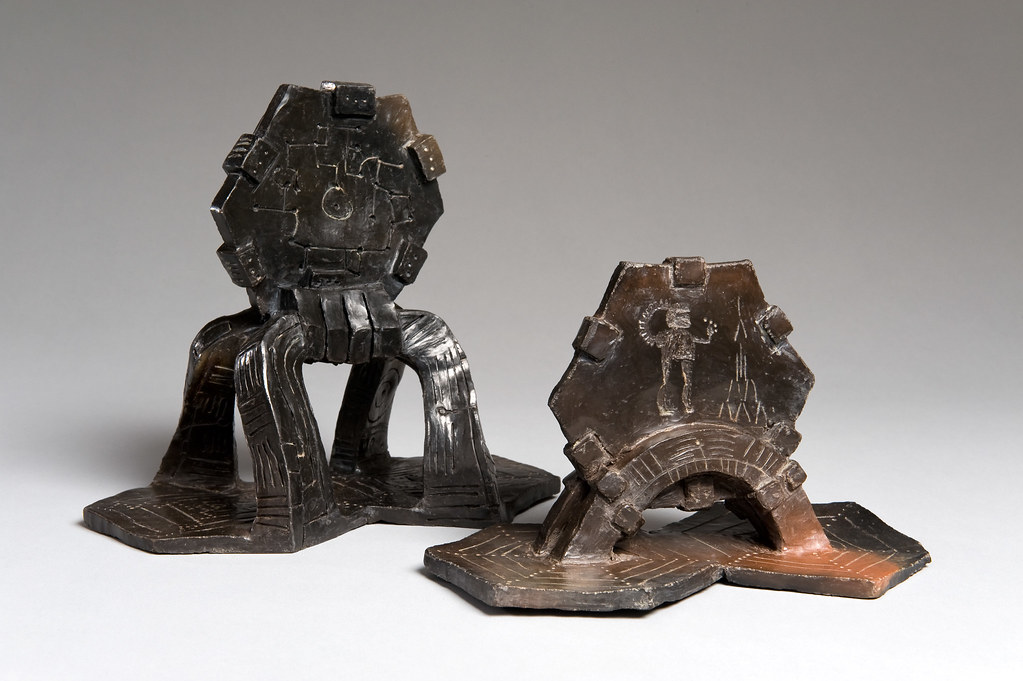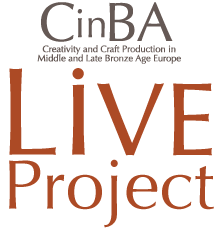Institution: University of Wolverhampton
Course: Design and Applied Arts
Title: Sun Lander Discs
Description: This piece consists of five cosmology-inspired objects. All are burnished, sawdust fired and beeswaxed
Inspiration: Nebra Sky Disk, Trundholm Sun Chariot, Scandinavian Rock Carvings
After attending a talk by Dr Jo Sofaer and a Bronze Age pottery handling session at the British Museum, I developed a great interest in Bronze Age cosmology. My research focused on depictions within Scandinavian rock carvings, the Trundholm Sun Chariot, the Nebra Sky Disc, and generally the narrative of the sun’s journey. Extending this focus I decided to look at more contemporary objects to do with how people today understand and explore the universe: satellites, space craft, as well as the Large Hadron Collider.
My primary contemporary inspiration is the Phoenix Mars Lander, as from making a few test pieces and designs, the hexagonal solar panels really appealed to me. By applying contrasting approaches to cosmology I developed the design of three discs with a stand. The stand or four ‘legs’ and the round disc appear from a certain angle like a horse. This was originally unintentional but was purposefully maintained as a design feature. The remaining two discs were hexagonal, and placed as a platform or ‘landing discs’ underneath the other disc and stand. Upon the discs are line carvings depicting the patterning of solar panels, astronauts, the International Space Station and the Large Hadron Collider along with 24 dots representing time as a response to the 32 dots on the Nebra disk. It was surprising how the contemporary and Bronze Age designs merged very smoothly. The use of red terracotta clay helped remove more of the contemporary metallic association with space but the use of burnishing and sawdust firing helped encompass the shine of what could be bronze due to the flashes of raw clay and oiled black.



